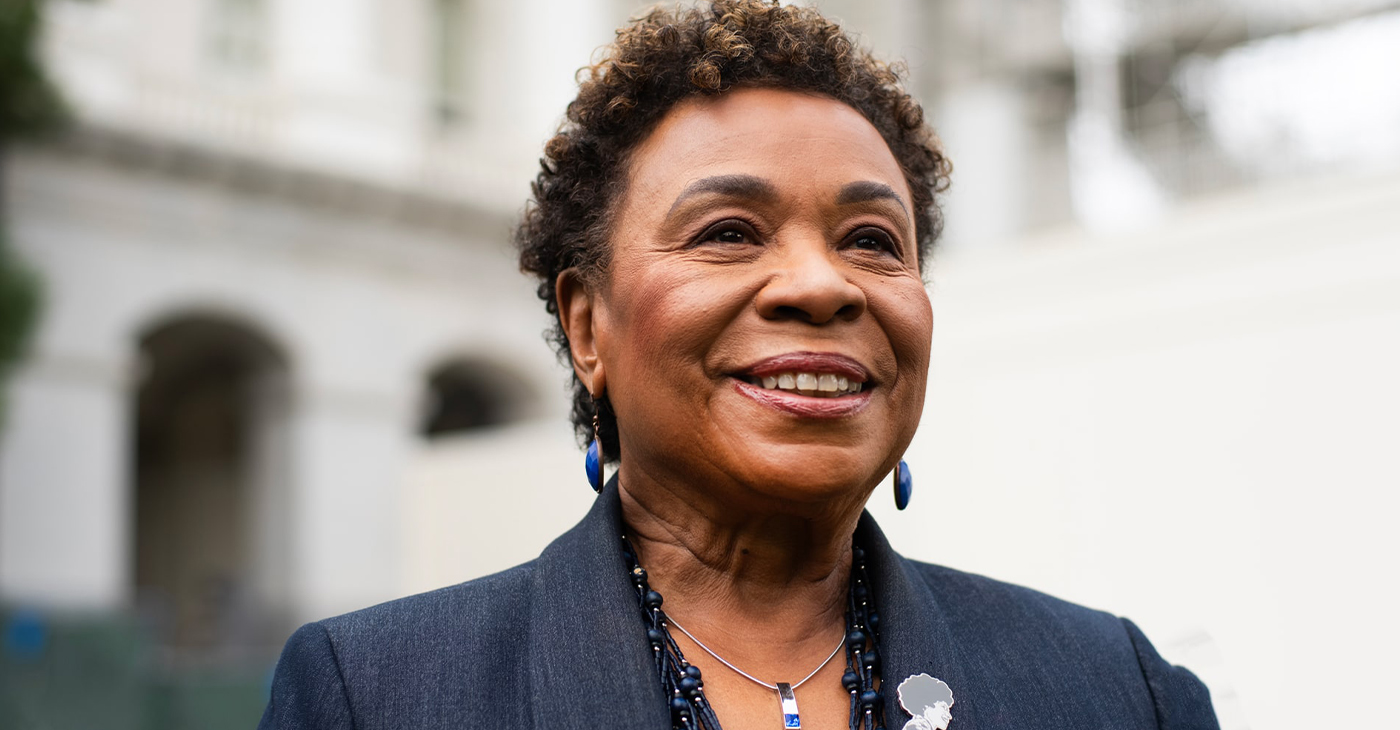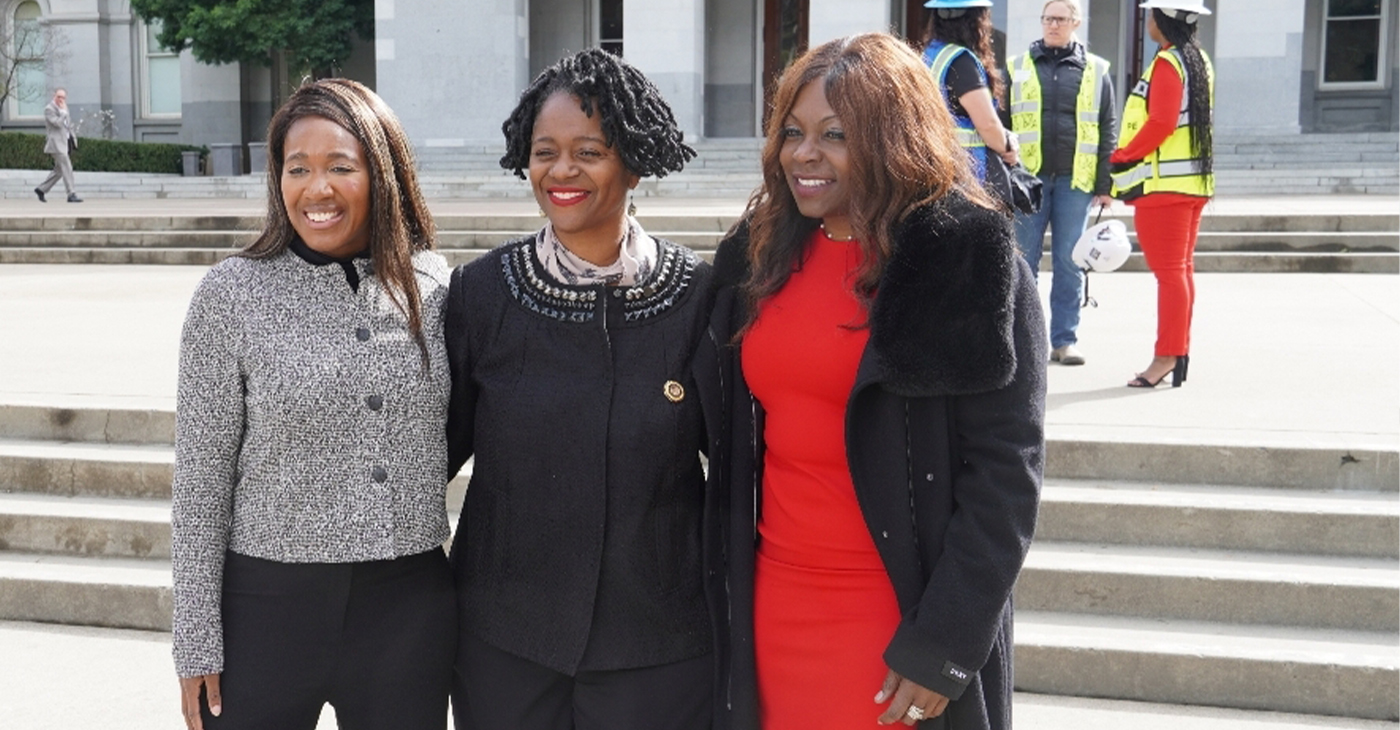Politics
Obama’s Tax Cuts Target Parents, Families with 2 Incomes

President Barack Obama delivers remarks at the Department of Homeland Security on his FY2016 budget proposal, on Monday, Feb. 2, 2015, in Washington. Obama warned congressional Republicans Monday that he won’t accept a spending plan that boosts national security at the expense of domestic programs for the middle class. (AP Photo/Evan Vucci)
STEPHEN OHLEMACHER, Associated Press
WASHINGTON (AP) — President Barack Obama is proposing nearly $280 billion in tax cuts for low- and middle-income families, but not everyone will benefit.
Obama’s proposed budget calls for a total of $1.5 trillion in new taxes over the next decade, mostly on corporations and high-income households. He would use much of that money to pay for targeted tax breaks for low- and middle-income families.
The proposed tax cuts would benefit households with two wage earners, families with young children in child care and those with older children in college. One proposal would automatically enroll workers in individual retirement accounts, unless they opt out. Another would extend the Earned Income Tax Credit to low-wage workers without children.
Obama calls his tax and spending plan “middle-class economics.” But middle-income families that don’t fit these categories won’t see many changes in their taxes, according to an analysis by the Tax Policy Center, a research group formed by the Urban Institute and the Brookings Institution.
For families making between $50,000 and $75,000 a year, about a quarter of them would get a tax cut, averaging $545, according to the analysis. About 6 percent would get a tax increase, and the rest — about 70 percent — would see no change in their tax bill.
Among the bottom 20 percent — families with incomes averaging $15,600 — nearly a third would get tax cuts averaging $617. The rest would see little or no change in their taxes.
“The key thing is that, overall, there will be winners, losers and a lot of people unaffected,” said Roberton Williams, a fellow at the Tax Policy Center.
The center’s analysis focused on the effects of the two-earner tax credit, the child-care credit, the expanded education credit, the tax credit for low-wage workers and the program making it easier for workers to enroll in retirement accounts, Williams said. The analysis also took into account Obama’s proposal to increase taxes on some investments and estates.
All of these proposals were part of Obama’s larger budget plan, which he unveiled Monday.
Obama would pay for middle-class tax cuts by raising taxes on the wealthy — including increasing the tax on capital gains — and changing the way the U.S. taxes the foreign profits of American corporations. Obama’s proposals are designed to further talks on Capitol Hill about revamping American business taxes, lowering the overall tax rate while eliminating or reducing many tax breaks.
Obama’s proposed tax increases, however, are running into strong opposition from Republicans in Congress.
“I want to work with this administration, and I hope that we can find common ground,” said Rep. Paul Ryan, R-Wis., chairman of the tax-writing House Ways and Means Committee. “But the president has to demonstrate that he’s interested in governing, not just posturing.”
Obama’s proposed tax cuts are getting a friendlier welcome — House Speaker John Boehner, R-Ohio, said he is open to Obama’s plan to increase a tax credit to help pay for childcare expenses. But Boehner has been critical of Obama’s overall plan.
The Obama administration says its proposal addresses decades of rising income and wealth inequality, and a tax system that “lets the wealthy shelter hundreds of billions of dollars from taxes each year.”
“The president’s budget proposes targeted policies to strengthen the middle class, level the playing field for American businesses, create more fairness in our tax code, and lay the groundwork for long-term economic growth for our country that is broadly shared, all while setting a course to put our country on sound fiscal footing,” Treasury Secretary Jacob Lew said in a statement.
Among Obama’s proposed tax cuts for middle- and low-income families:
— Create a tax credit of up to $500 for families with a second wage-earner, which the administration says would benefit 24 million couples. Cost: $89 billion over 10 years.
— Triple the child care tax credit — to a maximum of $3,000 per child — and make the full credit available to families with incomes up to $120,000. Families with higher incomes could get a reduced credit. Cost: $50 billion over 10 years.
Obama’s plan would repeal tax breaks for flexible spending accounts for child-care expenses.
— Extend the Earned Income Tax Credit to low-wage workers with no children. Cost: $60 billion over 10 years.
— Consolidate several education tax breaks into an enhanced tax credit of up to $2,500 a student to help pay for college expenses. The tax credit, which is scheduled to expire at the end of 2017, would be made permanent. Cost: $31 billion over 10 years.
Obama initially proposed to scale back the tax benefits of college savings accounts, known as 529 accounts. But he dropped the proposal after getting resistance from both Republicans and Democrats in Congress.
___
Follow Stephen Ohlemacher on Twitter: http://twitter.com/stephenatap
Copyright 2015 The Associated Press. All rights reserved. This material may not be published, broadcast, rewritten or redistributed.
Activism
Oakland Post Endorses Barbara Lee
Barbara Lee will be able to unify the city around Oakland’s critical budget and financial issues, since she will walk into the mayor’s office with the support of a super majority of seven city council members — enabling her to achieve much-needed consensus on moving Oakland into a successful future.

As we end the celebration of Women’s History Month in Oakland, we endorse Barbara Lee, a woman of demonstrated historical significance. In our opinion, she has the best chance of uniting the city and achieving our needs for affordable housing, public safety, and fiscal accountability.
As a former small business owner, Barbara Lee understands how to apply tools needed to revitalize Oakland’s downtown, uptown, and neighborhood businesses.
Barbara Lee will be able to unify the city around Oakland’s critical budget and financial issues, since she will walk into the mayor’s office with the support of a super majority of seven city council members — enabling her to achieve much-needed consensus on moving Oakland into a successful future.
It is notable that many of those who fought politically on both sides of the recent recall election battles have now laid down their weapons and become brothers and sisters in support of Barbara Lee. The Oakland Post is pleased to join them.
Activism
Oakland Post: Week of March 28 – April 1, 2025
The printed Weekly Edition of the Oakland Post: Week of March 28 – April 1, 2025

To enlarge your view of this issue, use the slider, magnifying glass icon or full page icon in the lower right corner of the browser window.
Activism
Sen. Lola Smallwood-Cuevas Honors California Women in Construction with State Proclamation, Policy Ideas
“Women play an important role in building our communities, yet they remain vastly underrepresented in the construction industry,” Smallwood-Cuevas stated. “This resolution not only recognizes their incredible contributions but also the need to break barriers — like gender discrimination.

By Antonio Ray Harvey, California Black Media
To honor Women in Construction Week, Sen. Lola Smallwood-Cuevas (D-Los Angeles), a member of the California Legislative Black Caucus (CLBC), introduced Senate Concurrent Resolution (SCR) 30 in the State Legislature on March 6. This resolution pays tribute to women and highlights their contributions to the building industry.
The measure designates March 2, 2025, to March 8, 2025, as Women in Construction Week in California. It passed 34-0 on the Senate floor.
“Women play an important role in building our communities, yet they remain vastly underrepresented in the construction industry,” Smallwood-Cuevas stated. “This resolution not only recognizes their incredible contributions but also the need to break barriers — like gender discrimination.
Authored by Assemblymember Liz Ortega (D-San Leandro), another bill, Assembly Concurrent Resolution (ACR) 28, also recognized women in the construction industry.
The resolution advanced out of the Assembly Committee on Rules with a 10-0 vote.
The weeklong event coincides with the National Association of Women In Construction (NAWIC) celebration that started in 1998 and has grown and expanded every year since.
The same week in front of the State Capitol, Smallwood, Lt. Gov. Eleni Kounalakis, Assemblymember Josh Hoover (R-Folsom), and Assemblymember Maggie Krell (D-Sacramento), attended a brunch organized by a local chapter of NAWIC.
Two of the guest speakers were Dr. Giovanna Brasfield, CEO of Los Angeles-based Brasfield and Associates, and Jennifer Todd, President and Founder of LMS General Contractors.
Todd is the youngest Black woman to receive a California’s Contractors State License Board (A) General Engineering license. An advocate for women of different backgrounds, Todd she said she has been a woman in construction for the last 16 years despite going through some trying times.
A graduate of Arizona State University’s’ Sandra Day O’Connor College of Law, in 2009 Todd created an apprenticeship training program, A Greener Tomorrow, designed toward the advancement of unemployed and underemployed people of color.
“I always say, ‘I love an industry that doesn’t love me back,’” Todd said. “Being young, female and minority, I am often in spaces where people don’t look like me, they don’t reflect my values, they don’t reflect my experiences, and I so persevere in spite of it all.”
According to the U.S. Bureau of Labor Statistics, only 11.2% of the construction workforce across the country are female. Overall, 87.3% of the female construction workers are White, 35.1% are Latinas, 2.1% are Asians, and 6.5% are Black women, the report reveals.
The National Association of Home Builders reported that as of 2022, the states with the largest number of women working in construction were Texas (137,000), California (135,000) and Florida (119,000). The three states alone represent 30% of all women employed in the industry.
Sen. Susan Rubio (D-Baldwin Park) and the California Legislative Women’s Caucus supported Smallwood-Cuevas’ SCR 30 and requested that more energy be poured into bringing awareness to the severe gender gap in the construction field.
“The construction trade are a proven path to a solid career. and we have an ongoing shortage, and this is a time for us to do better breaking down the barriers to help the people get into this sector,” Rubio said.
-

 Activism4 weeks ago
Activism4 weeks agoUndocumented Workers Are Struggling to Feed Themselves. Slashed Budgets and New Immigration Policies Bring Fresh Challenges
-

 Activism1 week ago
Activism1 week agoWe Fought on Opposite Sides of the Sheng Thao Recall. Here’s Why We’re Uniting Behind Barbara Lee for Oakland Mayor
-

 Activism4 weeks ago
Activism4 weeks agoOakland Post: Week of March 5 – 11, 2025
-

 #NNPA BlackPress2 weeks ago
#NNPA BlackPress2 weeks agoRev. Dr. Jamal Bryant’s Black Church Target Boycott Mobilizes 150,000
-

 Activism2 weeks ago
Activism2 weeks agoSan Francisco Is Investing Millions to Address Food Insecurity. Is Oakland Doing the Same?
-

 #NNPA BlackPress4 weeks ago
#NNPA BlackPress4 weeks agoTrump Moves to Dismantle Education Department
-

 #NNPA BlackPress4 weeks ago
#NNPA BlackPress4 weeks agoFighting to Keep Blackness
-

 #NNPA BlackPress2 weeks ago
#NNPA BlackPress2 weeks agoRecently Approved Budget Plan Favors Wealthy, Slashes Aid to Low-Income Americans























































